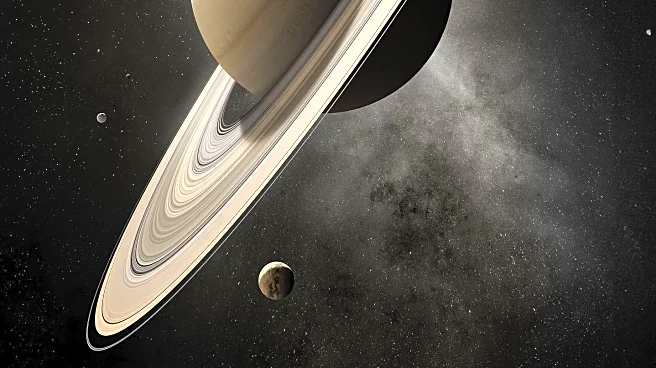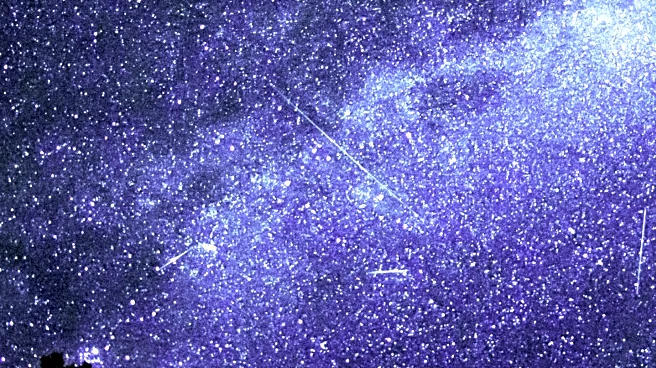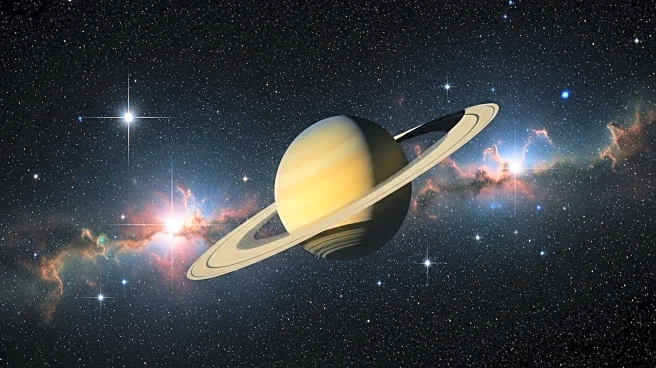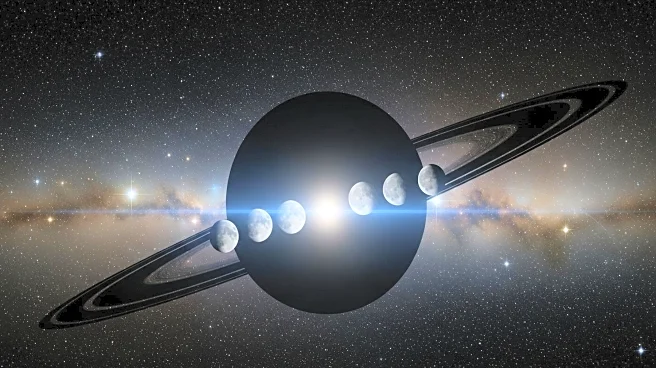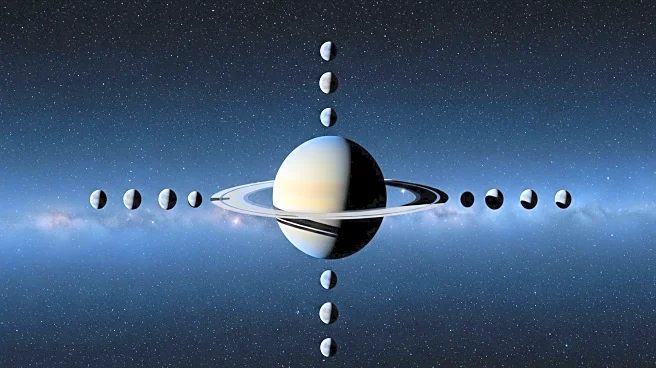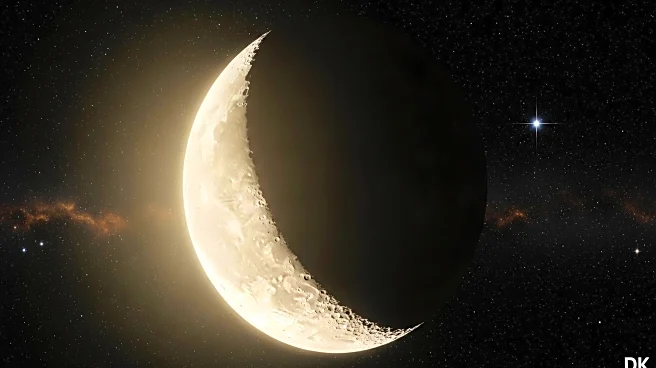What's Happening?
Central Wisconsin sky watchers are in for a treat with a series of celestial events featuring Saturn, Venus, and Uranus. Saturn's unusual moon, Iapetus, is at its greatest western elongation, making it visible with a telescope. Saturn's brightest moon, Titan, along with Rhea, Tethys, and Dione, are clustered around the planet, offering a chance to compare their brightness and distances. Venus is visible before sunrise, positioned near the Beehive Cluster in Cancer, providing a stunning view through binoculars or a small telescope. Additionally, Delta Cephei, a Cepheid variable star, is visible, offering an opportunity to track its brightness cycle. Mercury is also visible near Regulus, Leo's brightest star, requiring binoculars for a clear view. The Great Square of Pegasus is rising, providing a guide to autumn skies. These events offer a unique opportunity for sky watchers to observe and learn about the dynamic celestial bodies.
Why It's Important?
These celestial events are significant for astronomy enthusiasts and educators, providing a practical opportunity to observe and study planetary movements and star cycles. Observing Saturn's moons and Venus in the Beehive Cluster can enhance understanding of planetary systems and star clusters. Tracking Delta Cephei offers insights into variable stars, which are crucial for understanding cosmic distances and the expansion of the universe. The visibility of Mercury and Regulus provides a chance to learn about planetary alignments and star brightness. These events can inspire interest in astronomy and science, encouraging educational activities and community engagement in stargazing events.
What's Next?
Sky watchers can continue to observe these celestial events throughout the week, with Saturn's moons offering dynamic views as they transit the planet. Venus will remain visible near the Beehive Cluster, providing ongoing opportunities for observation. As the Moon wanes, darker skies will allow for better visibility of fainter stars and galaxies, including the Andromeda Galaxy. Astronomy clubs and educators may organize stargazing events to capitalize on these opportunities, fostering community interest in astronomy and science.
Beyond the Headlines
The visibility of these celestial events highlights the importance of preserving dark skies and reducing light pollution, which can hinder astronomical observations. It also underscores the role of amateur astronomers in contributing to scientific discoveries and data collection. These events can spark discussions on the cultural significance of astronomy and its impact on human understanding of the universe.
